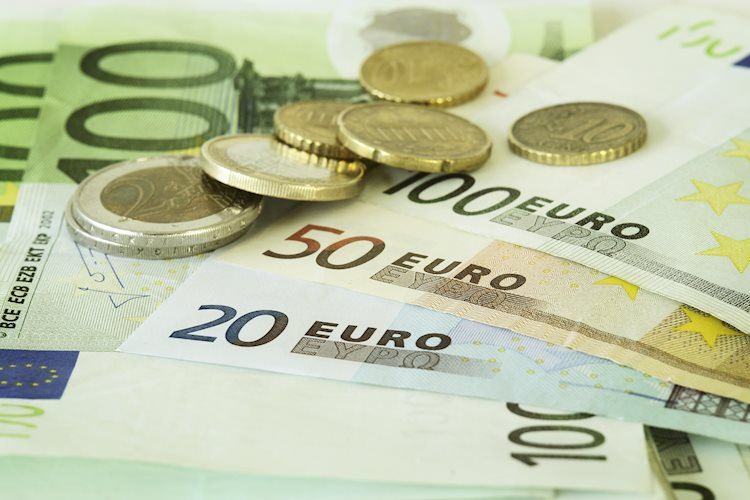The EUR/USD pair is trading near 1.0965 during Monday’s early European session, marking the seventh consecutive day of decline. This drop is attributed to the strengthening of the US Dollar, following the release of US jobs data on Friday. Traders have scaled back their expectations for a 50 basis points Fed rate cut at the November meeting, putting pressure on the Euro. The daily chart for EUR/USD shows a vulnerable bullish outlook as the pair hovers around the key 100-day EMA. The RSI indicator stands below the midline, indicating downward momentum. A decisive move below the 100-day EMA at 1.0970 could lead to a drop to 1.0881, with crucial support at 1.0805-1.0800. On the upside, the 1.1000 psychological level is the first barrier, with potential gains to 1.1144 and 1.1223.
The Euro is the currency used by 19 European Union countries in the Eurozone and is the second most traded currency globally after the US Dollar. EUR/USD is the most traded currency pair, accounting for approximately 30% of all transactions. The European Central Bank in Frankfurt, Germany, acts as the reserve bank for the Eurozone, setting interest rates and managing monetary policy. The ECB’s primary goal is price stability, achieved through controlling inflation and stimulating growth. Economic indicators such as GDP, inflation rates, and employment data play a crucial role in determining the Euro’s value. The ECB Governing Council makes monetary policy decisions eight times a year.
Eurozone inflation data, measured by the HICP, is essential for the Euro’s performance. High inflation may prompt the ECB to raise interest rates to control it, benefiting the Euro. Data releases such as GDP, Manufacturing and Services PMIs, and consumer sentiment surveys provide insights into the region’s economic health and can impact the Euro’s direction. Strong economic data can attract foreign investment and lead to interest rate hikes, strengthening the Euro. Conversely, weak economic data may cause the Euro to depreciate. The Trade Balance indicator, which measures the difference between exports and imports, also influences the Euro’s value.
In 2022, the Euro accounted for 31% of all foreign exchange transactions, with an average daily turnover exceeding $2.2 trillion. The EUR/USD pair is the most traded currency pair globally, followed by EUR/JPY, EUR/GBP, and EUR/AUD. The ECB plays a crucial role in managing the Eurozone’s monetary policy, aiming for price stability by controlling inflation and stimulating growth. Data releases such as inflation rates, GDP, and employment data are closely monitored for their impact on the Euro. A positive Trade Balance strengthens the Euro, while a negative balance can lead to depreciation. Traders track economic indicators and monetary policy decisions to gauge the Euro’s performance in the foreign exchange market.
In conclusion, the EUR/USD pair is facing downward pressure, with the US Dollar gaining strength against the Euro. The daily chart shows a vulnerable bullish outlook for EUR/USD, with key support levels at 1.0881 and 1.0805-1.0800. Economic indicators and data releases play a significant role in determining the Euro’s performance, with inflation data and monetary policy decisions by the ECB influencing the currency’s value. Traders closely monitor economic indicators and data releases to assess the Euro’s trajectory in the foreign exchange market, with the EUR/USD pair remaining one of the most heavily traded currency pairs globally.











